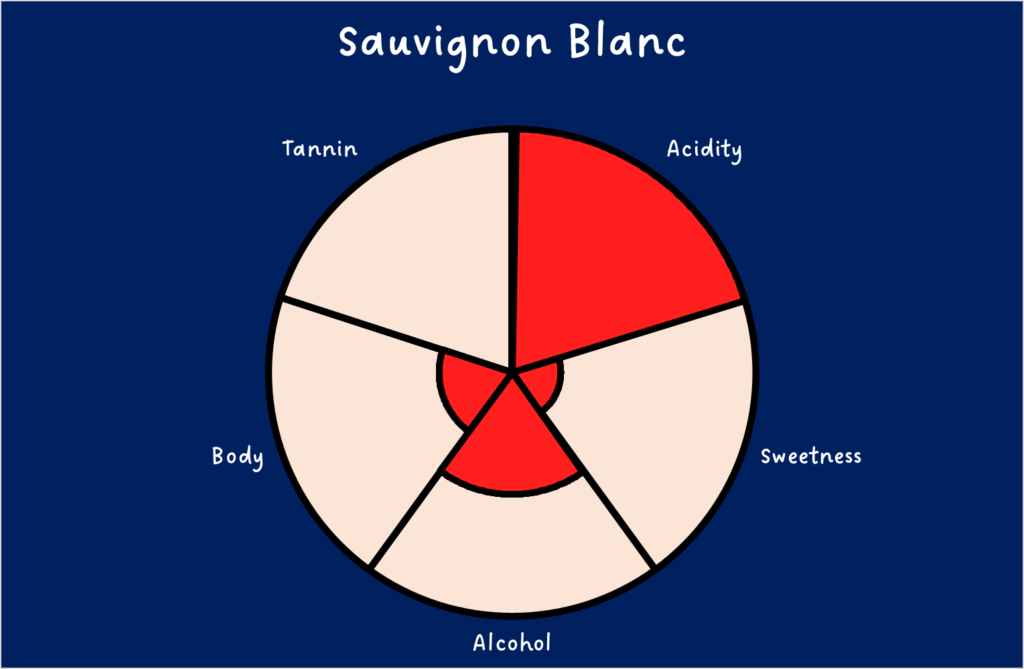
Grape varieties: Sauvignon Blanc
If you enjoy you wines fresh, zingy and dazzling with sharp in flavour, chance are you’re a Sauvignon Blanc fan! Sauvignon Blanc is arguably everything that Chardonnay is not. It is not lacking in flavour, it oozes flavour and aromatics in spades. Its positively buzzing with acidity. That tingle in your mouth, thats the acid doing its job. And its not a wine that generally benefits from lots of fussy winemaking techniques. Keep it pure, enjoy it more!
About the Sauvignon Blanc grape
The white grape is a late to bud, but often ripens early. It can thrive in warm climates, but some of the best examples come from cold climate regions. From these climates, it typically has grassy, nettle, floral, citrus, green fruit notes. It is often described as a wine with a gooseberry or grapefruit taste. The more tropical the climate, the more likely flavours such as peach, pineapple and passionfruit may develop. It is not generally aged as it tends to develop an undesirable vegetal note.
The grape that screwed the cork
Sauvignon Blanc is generally drunk fresh, and was one of the first varieties to use a screw cap. And, given its popularity in New Zealand, where corks are less readily available, it has quickly become fashionable to ditch the cork. However, in France, there are regions where Sauvignon Blanc can be produced to age successfully and where corks are still very much used.
Profile
While the profile of Sauvignon Blanc can vary greatly depending on techniques and location, the grape is generally considered:
- High in acidity
- Typically dry in style
- Medium in Alcohol
- Light to medium bodied
- No tannin

As we have said above flavours can be many and varied depending on location. But include: Citrus fruits, Green Fruit, Gooseberry, Grapefruit, Florals, Minerality, Stone Fruits, Tropical Fruits, Passionfruit, and herbacious notes.
Sancerre
Arguably the best Sauvignon Blanc wines comes from Sancerre in France. The big thing to note about Sancerre is its distinctive minerality or flinty flavours. Because it is from a cooler climate it is also likely to come with more green and citrus fruit flavours. Generally, this style of Sauvignon Blanc is more complex and subtle than the bold fresh New Zealand style.
Production
The grape is widely grown in France. In particular, it can be found in Bordeaux and the Loire. In Sauternes it is often blended with other varieties to make a sweet wine. These wines are affected by a fungus which causes the sugars to concentrate in the grapes. The grape is also popular in Australia and New Zealand with the latter being a prolific producer. The grape is also grown in other parts of the New World – Chile, Brazil, South Africa, the USA. There are even some oaked examples, which can taste quite good.
So next time you’re after something refreshing and zingy, do you think you’ll reach for a bottle of Sauvignon Blanc? Or if you’re not a fan, maybe you’ll try a Sancerre for something more subtle. Whatever you’re drinking, and wherever in the world you are, be sure to let me know. In the meantime, keep exploring this beautiful planet we live on, one glass at a time!